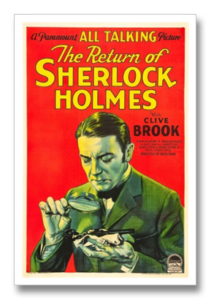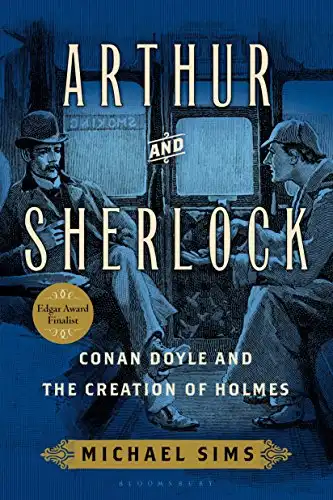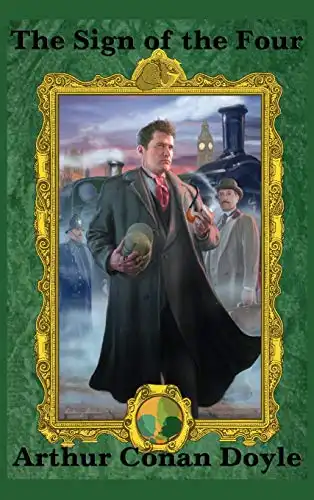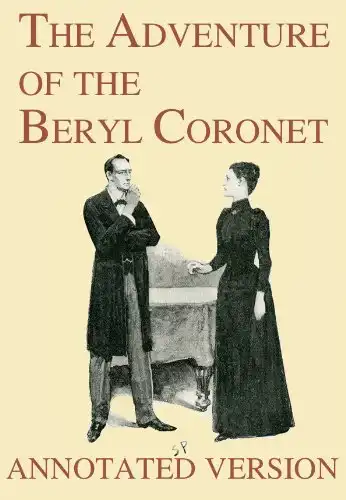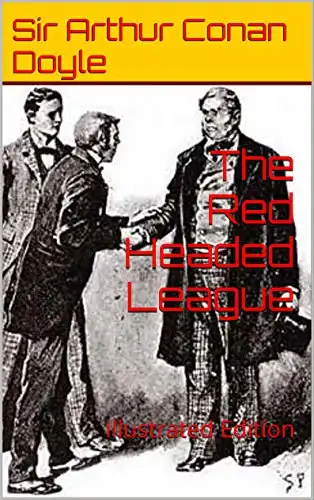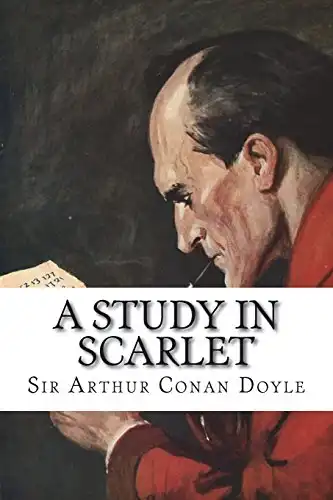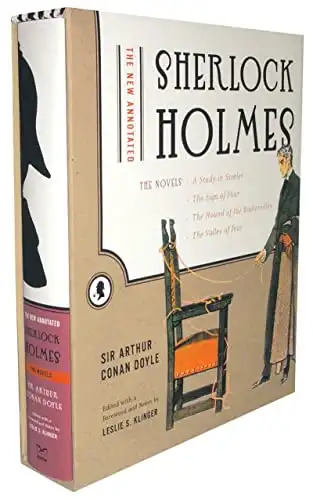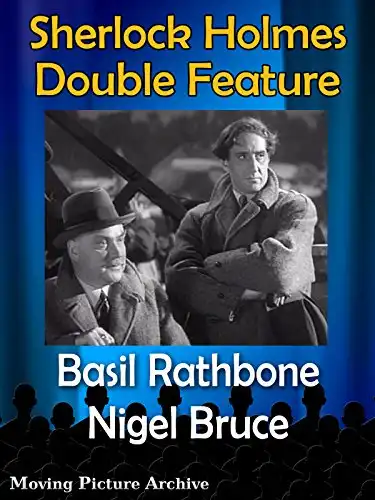Naturally, some of the best known Sherlock Holmes quotations and catchphrases come from the classic detective stories written by Sherlock’s creator, British author Sir Arthur Conan Doyle (1859-1930).
For example, there’s the famed sleuthing maxim that’s cited by thousands of quotation books and websites: “When you have eliminated the impossible, whatever remains, however improbable, must be the truth.”
Versions of that Holmesian principle are used in several Sherlock Holmes stories. The first is spoken by Sherlock in Chapter 6 of Doyle’s story “The Sign of Four” (1890).
The full sentence in which he used it, in a conversation with his mystery-solving partner Dr. John H. Watson, is: “How often have I said to you that when you have eliminated the impossible, whatever remains, however improbable, must be the truth?”
Doyle also used variations of it in two other stories: “The Beryl Coronet” (1892) and “The Blanched Soldier” (1926).
In “The Beryl Coronet” Holmes says to a banker named Mr. Alexander Holder: “It is an old maxim of mine that when you have excluded the impossible, whatever remains, however improbable, must be the truth.”
Early in the story “The Blanched Soldier,” Holmes explains to some concerned clients that his investigation process “…starts upon the supposition that when you have eliminated all which is impossible, then whatever remains, however improbable, must be the truth.”
Another famous Sherlockian catchphrase is “a three-pipe problem.” It comes from the story “The Red-Headed League” (1891). In that, when Dr. Watson asks Holmes what he will do to begin to solve a new case they’d been presented with, Holmes says he will start by smoking his pipe. He explains: “It is quite a three pipe problem, and I beg that you won’t speak to me for fifty minutes.”
One of the best-known phrases that comes from Doyle’s stories about the adventure of Sherlock Holmes is “the game is afoot.” It’s so well known you’d think it was some repeated line of Sherlock’s. But in the Doyle stories it is used in only one, “The Adventure of the Abbey Grange” (1904).
In that story, Holmes rousts Dr. Watson out of bed and says: “Come, Watson, come!…The game is afoot. Not a word! Into your clothes and come!”
The famous quotations from Doyle stories noted above have all been used in later radio, movie and TV adaptations.
However, two of the most widely-quoted Sherlock Holmes quotations used in those mediums don’t come from the stories penned by Sir Arthur Conan Doyle.
For example, Doyle’s Sherlock never said “Elementary, my dear Watson.”
In the story “The Crooked Man” (1893), Doyle’s Sherlock does say the word “Elementary” to his friend Doctor Watson, after Watson expresses surprise that Holmes had correctly guessed the doctor had had a busy day. But Holmes does NOT say “Elementary, my dear Watson” in that story or in any other Sherlock Holmes story written by Doyle.
As noted in a definitive post by Garson O’Toole on his Quote Investigator site, the phrase “Elementary, my dear Watson” was floating around in the early 1900s, but Sherlock Holmes movies probably deserve the credit for making it a widely known catchphrase.
The first movie to use it was The Return of Sherlock Holmes (1929). It starred Clive Brook as Sherlock and was released in the USA on October 26, 1929.
The line was then reused in several other Sherlock Holmes films, including: Sherlock Holmes’ Fatal Hour (1931), The Sign of Four: Sherlock Holmes’ Greatest Case (1932), Sherlock Holmes and the Voice of Terror (1942), Pursuit to Algiers (1945), The Hound of the Baskervilles (1959).
Another line often cited as a Sherlock Holmes quote which does not appear in Doyle’s stories is “Quick, Watson, the needle.”
That originated in a comedic operetta titled The Red Mill (1906), which premiered on Broadway on September 24, 1906.
Ironically, the operetta is not a Sherlock Holmes story. The “needle” line is a quip by a con man who is impersonating Sherlock as part of a scam.
The Sherlock Holmes film Hound of the Baskervilles, released on March 31, 1939, further confused the facts about whether it was “real” Sherlock quotation.
In that film — one of the best of a series Holmes films that starred Basil Rathbone as the great sleuth — Basil says: “Oh, Watson, the needle.”
There’s no such quote about a needle in Doyle’s stories, though Doyle did tell us that Sherlock was a user of both cocaine and morphine.
In Doyle’s story “A Study in Scarlet” (1887), Watson comments that he often found Sherlock in a dreamlike state and “suspected him of being addicted to the use of some narcotic.”
Three years later, in Doyle’s “The Sign of Four,” fans of Sherlock first read about the “seven-percent-solution.”
As that story begins, Watson sees Sherlock injecting himself with a needle and notices ugly track marks on his arm.
“Which is it today,” Watson asks, “morphine or cocaine?”
“It is cocaine,” Sherlock replied, “a seven-per-cent solution. Would you care to try it?”
Since then, the drug habit of the world’s greatest detective has sparked continuing controversy, articles, books and a great movie, Nicholas Meyer’s film The Seven-Per-Cent Solution (1976), adapted from his novel of the same name.
Sherlock’s use of cocaine and versions of various Sherlock quotes continue to show up in recent Sherlock Holmes movies, TV series and books. Indeed, the great detective seems to be more popular than ever. And, if you’re a fan (like me), it’s no mystery why.
* * * * * * * * * *
Comments? Corrections? Questions? Email me or post them on my Famous Quotations Facebook page.
Related reading, listening and viewing…



